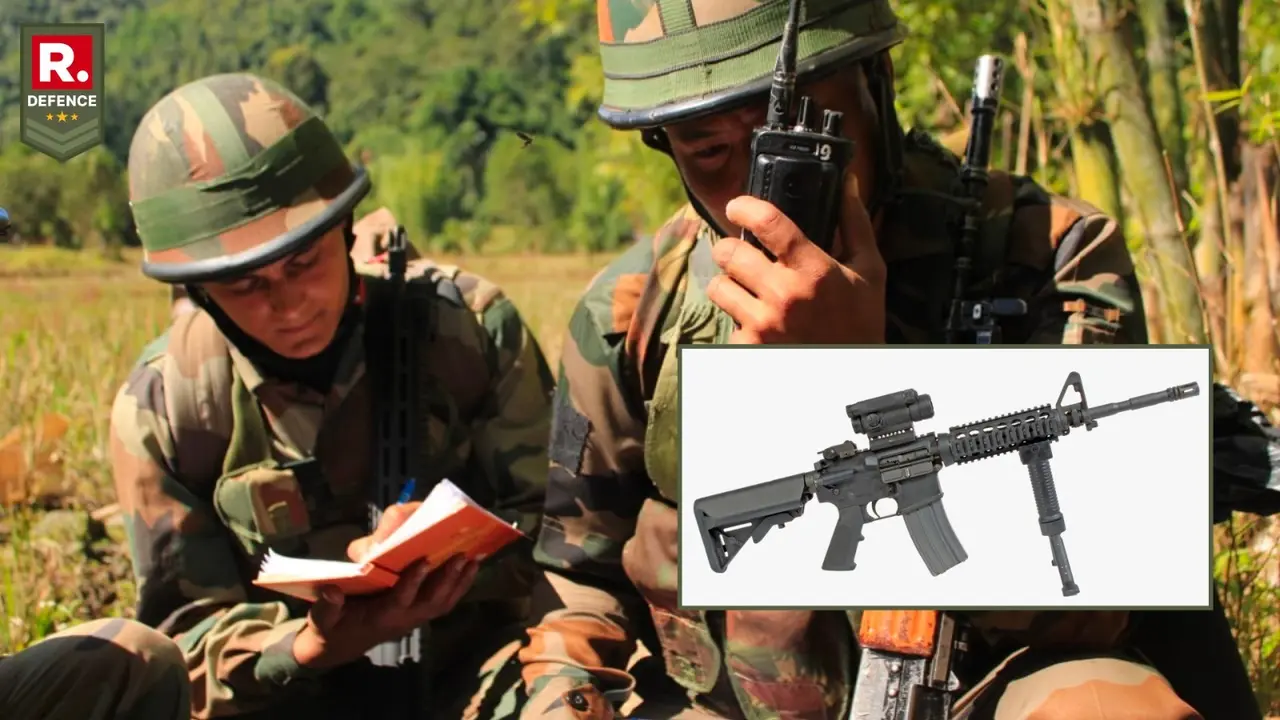Updated 23 April 2025 at 14:31 IST
M4 Rifles, Encrypted Radios: Clinching Proof Of How Pakistani Terrorists Hit Squad Executed Gruesome Pahalgam Massacre
Following the brutal massacre of 26 civilians in Pahalgam, forensic teams have confirmed the use of U.S.-origin M4 carbines, AK-47 variants.
- Defence News
- 4 min read

Kashmir, India - In the wake of the brutal terror attack that left 26 civilians dead in Pahalgam, forensic teams and survivor testimony have exposed a chilling level of sophistication. Preliminary analysis has confirmed the use of U.S.-made M4 rifles and AK-47/56 variants—military-grade weaponry rarely found outside formal armed forces. Forensics also hinted that encrypted Pakistani-made communication devices were used for coordination by trained handlers. Survivors recalled synchronized assault patterns and radio-directed movements among the assailants, confirming tactical discipline and lethal intent.
Intelligence intercepts, examined by agencies, have traced the digital footprints of the assailants back to safe houses in Muzaffarabad and Karachi. These intercepts also intercepted real-time communications between operatives in Kashmir and their handlers in Pakistan. According to sources within the security establishment, a known Lashkar-e-Taiba (LeT) commander based in Pakistan executed the strike, underlining the operational reach of Pakistan-based terror outfits.
Sophisticated Arsenal Signals Direct Military Pipeline from Pakistan to Kashmir
Investigative agencies have corroborated that the Pahalgam strike was not an isolated act but the latest in a sustained campaign bankrolled and executed from across the border. Officials point to a consistent pattern seen throughout 2024 when Indian forces recovered weapons with direct links to Pakistan’s military-industrial ecosystem. Among them were Steyr AUG assault rifles, commonly used by Pakistan’s elite Special Services Group (SSG), recovered during a January counter-operation in Kupwara.

Smuggled M4 carbines and AK-series rifles remain weapons of choice, supplied through networks routed via Afghanistan and funnelled into Kashmir through the LoC. Traces of Pakistani-manufactured plastic explosives, commonly used in high-casualty IEDs, have also been found, highlighting the state-scale logistics required for procurement and delivery. Each recovery underscores the calculated nature of Pakistani complicity, masked behind terrorist proxies.
Advertisement
Digital Warfare: Encrypted Radios, Dark Web Apps Facilitate Cross-Border Coordination
Electronic warfare experts working alongside counterterror units have previously confirmed the use of Pakistani-origin VHF radios and Chinese encryption systems among attackers. These devices, built for tactical field usage, allowed real-time communication and navigation support, helping the assailants bypass checkpoints and mount a surprise offensive.

Sources indicate the use of mobile-based encrypted apps such as Telegram, Zangi, and Psiphon, commonly used by Pakistan-backed militants for sharing maps, strike plans, and infiltration routes. Cyber forensic units are currently tracing metadata to further pinpoint the handlers’ identities and operational command nodes—believed to be located near the terror training camps in PoK.
Advertisement
Terror Financing Web Tied to Narcotics, FICN, and Covert Hawala Pipelines from Pakistan
Behind the tactical execution lies a robust financial undercurrent that powers LeT and its proxies. Indian intelligence has long established how Pakistan-based outfits rely on narcotics networks to fuel their operations. Afghan-origin heroin and poppy derivatives are funnelled through Balochistan and PoK into India, where profits are routed via hawala networks.
The infiltration of Fake Indian Currency Notes (FICN)—printed in Lahore and Karachi—remains a dual-purpose tool, destabilizing India's economy while bankrolling ground-level operatives. These notes are often slipped across borders by trained couriers and local sympathizers. Moreover, a web of so-called NGOs and charities in Pakistan functions as financial fronts, diverting donations under humanitarian pretences to arm, equip, and sustain militants in the Kashmir Valley.
TRF's Proxy Role Gives Pakistan Plausible Deniability, But Intel Trails Tell a Different Story
The Resistance Front (TRF), which claimed responsibility on social media for the Pahalgam massacre, continues to operate as Lashkar-e-Taiba’s PR front—created to mask the Pakistan Army’s direct hand in cross-border terrorism. While Islamabad insists on its innocence at diplomatic forums, ground realities and intercepted audio logs tell a story of full-spectrum warfare conducted by outsourced actors under state supervision.

From training camps in PoK to financial transactions in Dubai and Karachi, every terror plot linked to TRF carries unmistakable fingerprints of Pakistani military intelligence. Officials affirm that while the group provides Islamabad with deniability, the command architecture, funding pipeline, and logistics are unmistakably state-sponsored.
With forensic evidence mounting and digital trails pointing to state actors in Pakistan, Indian security agencies face a stark reality: tactical containment in Kashmir cannot succeed without strategic disruption across the border. As the world watches, the imperative now lies in confronting not just the terrorists in the Valley—but their enablers in Islamabad and Rawalpindi.
Watch- Pahalgam Terror Attack: 4 Pakistani Terrorists Identified as Cowards are Unmasked
Published By : Yuvraj Tyagi
Published On: 23 April 2025 at 14:31 IST
